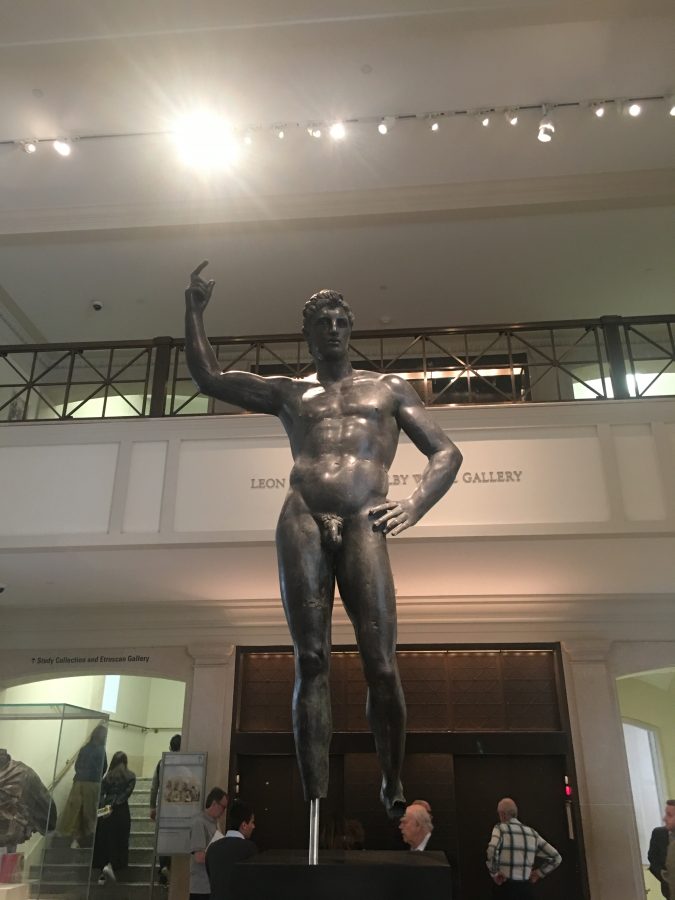The Intrepid Sea, Air and Space museum is an American military and maritime history museum which houses its exhibits inside the USS Intrepid, a WWII-era aircraft carrier that was once used by the U.S. army. It also has narrow doorways and high steps.
NYU Clinical Associate Professor Anita Perr, the principal investigator of a project to increase accessibility in the Intrepid, said implementing improvements are particularly difficult in historic sites, where there are rules against alterations that could compromise historic value.
“Even if it were possible, [the Intrepid] is not easy to change and because it’s a landmark historic site, you also can’t change it,” Perr said. “What we’re going to try to do is think […] If you can’t get to that original site, what’s the best way to simulate that so people still get the experience.”
Over the next three years, the working group will produce a digital publication titled Sensory Tools for Interpreting Historic Sites — a guidebook on museum accessibility strategies — which could be used as a lexicon for other historic sites after its distribution, according to a press release.
“We’re kind of calling [Sensory Tools] a cookbook of different suggestions of things museums can do to make exhibits or other spaces more accessible,” NYU Ability Project Director and Associate Professor Amy Hurst said.
The NYU Ability Project is an interdisciplinary research organization that brings together experts from the Tisch School of the Arts; Steinhardt School of Culture, Education and Human Development; and the Tandon School of Engineering. In addition to working on the guidebook, Hurst will teach a graduate-level course at Tandon during the spring semester alongside Perr.
Students will create prototypes of assistive technology for eight different museums spread out across the country, using ideas from the working group. This echoes a 2017 project in which NYU Ability Project partnered with the Cooper Hewitt, Smithsonian Design Museum to increase accessibility there.
“It’s so exciting and fun to see how students are learning from each other and see all the really amazing and creative ways that they can apply other people’s skills and knowledge to problems that are there today,” Hurst said.
Motivated by the 25% of adults in the U.S. who have disabilities related to hearing, vision, cognition and mobility, Hurst said the project will aim to address inaccessibility in all of its forms.
“Instead of actually focusing on physical accessibility, with this we’re really focusing on the interpretation,” Hurst said. “Here are the artifacts, but then what are the things that we can do to explain what those are that is more accessible.”
Hurst said that this could be achieved through closed-captioning on video exhibits with audio, clearer text colors and sizes, 3-D printed representations and placement of objects in a more considerate way.
Others have pushed for more accessible museums in the past. The organization Art Beyond Sight has worked with New York schools and museums for 25 years to promote inclusivity for people with disabilities.
Francesca Rosenberg, a member of the Art Beyond Sight board and the Director of Community and Access Programs at the Museum of Modern Art in New York, has previously written about how people tend to only think about wheelchair accessibility.
“Often, unless a person knows someone with a particular disability, one simply never thinks beyond the generalization,” Rosenberg said in the article. “This, in turn, creates barriers to full accessibility at [MoMa].”
NYU alumna Elaine Charnov, the Senior Vice President of Exhibits, Education and Programs at the Intrepid Museum, echoed Perr’s sentiment that one of the biggest challenges of this project is respecting the historical integrity of the landmark. Charnov said they want to take into account experiences from members of the community with disabilities.
“It might not be them walking through the actual environment but through large-scale 3-D creation, they can feel, sense, touch the scale of the engines that propelled aircraft carriers during World War II,” Charnov said. “We want to get recommendations from people who live this experience, whether it is members of the community who are blind, live with developmental disabilities, we want to learn from them.”
Email Lisa Cochran at [email protected].


























































































































































